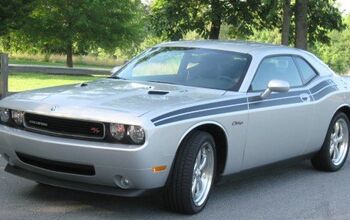CAW Workers Ratify Chrysler Agreement As The Countdown To 2016 Begins
Workers at Chrysler plants in Windsor and Brampton, Ontario ratified the CAW’s labor agreement by an overwhelming majority, despite a lack of new product or investment at either plant.
A new paint shop and a third shift at the Brampton Assembly Plant were rumored in the run-up to the deal, but neither materialized. While current jobs are protected under the agreement, what happens after its expiration at the end of 2016 is now the question on the minds of everyone from plant workers to industry observers.
When we last left off, I put forward the theory that Chrysler could move production of the LX cars to Italy, alongside the rumored baby Jeep that is thought to be part of their plan to export Italian-built cars to North America. TTAC readers suggested that this was a stretch, and the more likely candidate was Mexico. This isn’t out of the realm of possibility, but the question of “what will be built in Italy?” is a big question mark staring us all in the face.
In the mean time, CAW President Ken Lewenza will pursue his “ National Auto Policy“, which demands that the government devalue the Canadian dollar, suspend free trade talks with Japan and South Korea and take equity stakes in OEMs. When the CAW’s Auto Policy initiative was first floated back in April, The Globe and Mail dubbed it “ retrograde“, and some of its tenets, like devaluing Canada’s currency, seem totally implausible to the point where it’s difficult to take the proposal seriously. At best, it’s merely a distraction from the lack of meaningful gains with Chrysler in the areas of product and investment. At worst, it’s a foolish idea with little grounding in reality that will only serve to expedite the process of sending jobs abroad.
More by Derek Kreindler
Latest Car Reviews
Read moreLatest Product Reviews
Read moreRecent Comments
- Brian Uchida Laguna Seca, corkscrew, (drying track off in rental car prior to Superbike test session), at speed - turn 9 big Willow Springs racing a motorcycle,- at greater speed (but riding shotgun) - The Carrousel at Sears Point in a 1981 PA9 Osella 2 litre FIA racer with Eddie Lawson at the wheel! (apologies for not being brief!)
- Mister It wasn't helped any by the horrible fuel economy for what it was... something like 22mpg city, iirc.
- Lorenzo I shop for all-season tires that have good wet and dry pavement grip and use them year-round. Nothing works on black ice, and I stopped driving in snow long ago - I'll wait until the streets and highways are plowed, when all-seasons are good enough. After all, I don't live in Canada or deep in the snow zone.
- FormerFF I’m in Atlanta. The summers go on in April and come off in October. I have a Cayman that stays on summer tires year round and gets driven on winter days when the temperature gets above 45 F and it’s dry, which is usually at least once a week.
- Kwik_Shift_Pro4X I've never driven anything that would justify having summer tires.


































Comments
Join the conversation
The Detroit-3 Canadian workforce has fallen from 70,000 to less than 21,000 in 30 years. Bludgeoning the automakers into accepting unaffordable contracts is hastening the denouement. Unlike the union bosses, the CEOs are not financial nincompoops. Long term they won't pay the world's highest auto assembly wages. Chrysler's refusal to commit to a third shift at the Brampton plant is a thousand jobs that in all likelihood won't happen. Taxpayers will rebel at the thought of another carmaker bailout. Why should they pay for union foolishness? No taxpayer handouts and the American brands will pack up and leave Canada, probably within 10 years. The Japanese carmakers with Canadian plants have to be nervously eying events. They must match CAW wages to keep the barbarians on the far side of the gates. Nor are European and Asian auto companies clamoring to build new Ontario factories. They too are finding Canada unaffordable.
First of all devaluing a currency is not as easy as some politicians believe. In the past one of the levers used was to increase/decrease interest rates. With rates within 50 basis points of all time low, the bank of Canada has little room to move. When the cdn dollar was as low as 62 cents to the us dollar, the CAW used this advantage to negotiate a very rich series of contracts, richer than the UAW contracts. This $ advantage could have seen the number of employees in the canadian auto sector greatly increase. Instead the CAW traded increased jobs for increased pay and benefits. Their priviledge to do so, no argument. But now times have changed, my tax dollars have been used to maintain these CAW jobs, now there should be some concern on the CAW part to the sacrifice us taxpayers have made. But true to form, the CAW is only looking to maximize their benefit and to hell with all others.